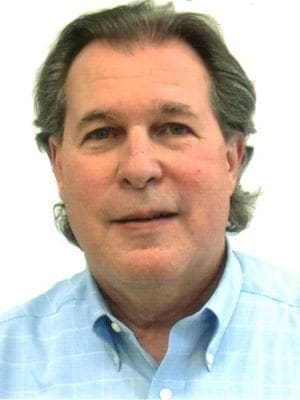A sermon by Keith Herron, Pastor, Holmeswood Baptist Church, Kansas City, Mo.
Christ the King Sunday
Colossians 1:15-20
November 24, 2013
Isaiah 58:3-9a; Matthew 25:31-40
We measure time two ways it seems. All calendars are built on the assumption of linear time (one day after the other); but calendars are also built on a circular model as those days counted in linear fashion circle back around from the beginning to the end where it starts all over again. Because of that, despite the fact that time is linear, because we recognize the importance of cyclical, sequential seasons, we also measure time in this circular manner. Maybe time is like a rolling wheel always moving forward, always turning round.
So arbitrarily established, a year (a measured, cyclical number of days) has a first day of the year and it ends with the last day of the year.
On the Christian calendar that marks the seasons of the year according to important days or seasons of faith, today is the last Sunday of the Christian calendar. Quite simply, it’s called Christ the King Sunday. A narrative we’ve been weaving since this time last year culminates in a direction that human history is headed to a time over the horizon when Jesus will be king everywhere in an ultimate sense, a notion we can only imagine from our perspective of provisional knowledge. It’s the belief that there’s a larger, guiding hand at work in the world that is headed toward a future we can only describe in something approaching dream language.
Today we’ll center our thoughts on the reign of Christ in two ways. The first will admittedly be lofty and ethereal. The second will be a dream sequence in the words of Jesus himself. Both point to the same central theme of the day. First the lofty: Read Colossians 1:15-20
However, I’d like to read something a bit more approachable to illuminate what we just read. Let’s lay alongside that esoteric language a story to help us latch on to what we just read in more concrete form. Here’s what Jesus said about these things, as he described what his return would look like:
When the Son of Man comes in his glory, (the Son of Man, as he liked to refer to himself) and all the angels with him, then he will sit on the throne of his glory. All the nations will be gathered before him, and he will separate people one from another as a shepherd separates the sheep from the goats, and he will put the sheep at his right hand and the goats at the left.
In truth, what we know with surety about these things is sketchy at best. When I read about this scene at the end of time I read it more like a vision than a concrete narrative, more suggestive than certain, a hint, a foreshadowing of things to come.[1] You get the picture, don’t you?
This is the classic genre of cautionary lines that begin, “I have good news and I have bad news, which do you want first?”
In this story, there is a startling surprise that accompanies Christ’s return. For some, those who have been guided by the right values and have tended to the world in compassionate ways, there is one surprise, viz., that all their small efforts to do some good in the world has been duly recognized by the God of creation.
But others, those who are guided by different values and have tended to their neighbor with hard-hearted indifference, not willing to give of themselves for the common good, their response will also be recognized for what it is and they will awarded in a different way. We learned a new word this week, “selfie,” has been added to the English language to describe someone who values themselves over others.
When we read this, we read it as a vision, a narrative to illustrate something important about the return of Jesus as he predicted. This vision is a chance to re-orient our lives in the Now, rather than moving toward that fateful day unprepared. This vision is not of something that has actually taken place, mind you, but it’s something of a dream sequence of how things might occur when that day so many long for finally occurs.
The Son of Man, God’s anointed One, sits like a king on a throne. So brightly shines his face, we cannot see him (remember, in dreams, faces are often obscured). All the peoples of the earth are gathered before the throne.
The kingly figure sitting on the throne is now a shepherd dividing the flock, sheep on the right, and goats on the left. Then the shepherd becomes a king again, the shepherd’s crook becomes a scepter and the typical Bedouin headdress becomes a crown.
Then the king speaks to the sheep on his right (his voice sounds like music): Come, O blessed of my Father, inherit the kingdom prepared for you from the foundation of the world.” He explains, I was hungry and you fed me; I was thirsty and you gave me drink; I was a stranger, and you opened your doors to me; I was naked and you clothed my nakedness; I was sick and you visited me; I was in prison and you came to me.
The sheep (who are persons) begin murmuring to one another. They say to him, “Lord,” using the divine name “Kyrios.” “Master, Kyrios/Lord, when did we see you afflicted like this? Hungry, thirsty, a stranger, naked, sick, and in prison? (reasoning) What Divine One, anointed of God, would suffer like this?”
The king answers: “Truly I say to you: As you did it to one of the least of these my brothers and sisters, you did it to me.”
Then the king turns to the goats on his left and says: “Get out of my sight, you who are accursed into the eternal fire prepared for the devil and his angels. For I was hungry, and you gave me no food; I was thirsty, and you gave me no water; I was a stranger and you shut the door; I was naked and you left me so; I was sick, in prison, and you did not visit me.”
Then the king on the throne says, “Truly I say to you, as you did it not to one of the least, you did it not to me.” That’s it; it’s the end of the dream. Or is it?
Like any good dream, this vision has the power to infiltrate our casual, unguarded thoughts. It has the power to linger around the edges of the mind and soul, as dreams often do. Sometimes dreams are figments and other times they’re as real as life itself. Sometimes God speaks to us through our dreams.
The details resist anything more than imagination or speculation. This is a parable, not a photograph. It’s a dream, not a blueprint. The one surety is this: The anointed One of God, the Messiah, is among the least of these. If you want to be where the Lord is, you must be where the least hang out.
Notice too that both the sheep and the goats are surprised about where they end up. It’s a happy thing for the sheep that have been serving the least of these, and it’s a terrible shock for the goats that have been neglecting the least of these. Consider it a warning to the spiritually smug who think they have it all figured out.
Mother Teresa understood this clearly as she watched another sick and impoverished Indian coming for help: “Here comes Christ in another distressing disguise.” Where do we meet the Messiah today? We find him where he said he would be, among “the least of these.”
[1] Thanks to Stephen Shoemaker for the insight to interpret this text as a dream sequence, “What Kind of King?” Myers Park Baptist Church, Charlotte, NC,

